The views expressed in our content reflect individual perspectives and do not represent the authoritative views of the Baha'i Faith.
When you become a Baha’i, you not only commit to a personal spiritual path by following Baha’u’llah’s teachings, you also join the most diverse group of people ever brought together on the planet.
Baha’is represent every conceivable background, every nationality, racial group, class, and culture. Baha’is come in all sizes, ages, and types. When you go to a Baha’i meeting, you may meet people from a totally different walk of life, a different country, a different tribe or a different level of experience – and you’ll encounter the wonderful gift of that diversity wherever you go in the global Baha’i community. As Baha’u’llah wrote:
O ye that dwell on earth! The distinguishing feature that marketh the preeminent character of this Supreme Revelation consisteth in that We have, on the one hand, blotted out from the pages of God’s holy Book whatsoever hath been the cause of strife, of malice and mischief amongst the children of men, and have, on the other, laid down the essential prerequisites of concord, of understanding, of complete and enduring unity. – Gleanings from the Writings of Baha’u’llah.
If you become a Baha’i, you’ll get lots of opportunities to have those unifying encounters. Baha’is love to gather together, especially since the main teaching of Baha’u’llah centers around unity. As explained in the previous essay, Baha’is gather every 19 days for a meeting called Feast – but the Baha’i community also has eleven Holy Days it regularly celebrates each year.
The Baha’i calendar begins on the Northern Hemisphere’s vernal equinox in March. After the annual Baha’i Fast ends, Baha’is celebrate Naw-Ruz, which simply means “New Year.”
In April, usually on the 20th or 21st, Baha’is observe The First Day of Ridvan, which commemorates the day when Baha’u’llah first publicly declared his new revelation in 1863. The entire Festival of Ridvan lasts for twelve days, although just three of those represent the designated Holy Days when Baha’is suspend work and gather together to celebrate. Nine days later, Baha’is observe The Ninth Day of Ridvan, and The Twelfth Day of Ridvan follows in early May.
Later that month Baha’is commemorate The Declaration of The Bab with another joyous festival that marks the day and time when Baha’u’llah’s predecessor and herald the Bab announced his revelation.
During the last week of May, Baha’is solemnly observe the Ascension of Baha’u’llah, followed on the 9th of July by the somber observance of the Martyrdom of The Bab, whose execution took place on that day in 1850.
In the fall – or spring in the Southern Hemisphere – Baha’is celebrate the Twin Holy Days, the birthdays of the Bab and Baha’u’llah, which took place a day apart and are now commemorated with joyful gatherings held over a two-day period.
In November, two further days associated with the life of Abdu’l-Baha, the son of Baha’u’llah, are also commemorated – on the 26th of November Baha’is celebrate the Day of the Covenant, and on November 28th observe the Ascension of Abdu’l-Baha, marking the day of his passing in 1921.
The final Holy Days of the Baha’i year take place in February and early March – called Intercalary Days, or Ayyam-i-Ha, they occur between the 18th and 19th Baha’i month. These four or five days are set aside as a time of preparation for the Baha’i Fast, hospitality, charity, and the giving of gifts. Baha’u’llah revealed the following prayer for the Intercalary Days:
My God, my Fire and my Light! The Days which Thou hast named Ayyam-i-Ha Thy Book have begun, O Thou Who art the King of names, and the fast which Thy most exalted Pen hath enjoined unto all who are in the kingdom of Thy creation to observe is approaching. I entreat Thee, O my Lord, by these days and by all such as have during that period clung to the cord of Thy commandments, and laid hold on the handle of Thy precepts, to grant that unto every soul may be assigned a place within the precincts of Thy court, and a seat at the revelation of the splendours of the light of Thy countenance. – Prayers and Meditations.
The annual fasting period for Baha’is lasts nineteen days – one Baha’i month. The month of Ala or Loftiness is the last month of the Baha’i year, and is a period when Baha’is abstain from food and drink from sunrise to sunset each day. The Guardian of the Baha’i Faith, Shoghi Effendi, characterized the purpose of the Fast as one of inner renewal:
It is essentially a period of meditation and prayer, of spiritual recuperation, during which the believer must strive to make the necessary readjustments in his inner life, and to refresh and reinvigorate the spiritual forces latent in his soul. Its significance and purpose are, therefore, fundamentally spiritual in character.
The Baha’i Fast ends with the Naw-Ruz Festival, the Baha’i New Year, a joyous time when the Baha’i community gathers and celebrates not only the end of the Fast but the beginning of a new year. In a tablet, Abdu’l-Baha described the symbol of Naw-Ruz this way:
This sacred day, when the sun illumines equally the whole earth, is called the equinox, and the equinox is the symbol of the Manifestation of God. The Sun of Truth rises on the horizon of Divine Mercy and sends forth its rays. This day is consecrated to commemorate it. It is the beginning of Spring. When the sun appears at the equinox, it causes a movement in all living things. The mineral world is set in motion, plants begin to shoot, the desert is changed into a prairie, trees bud and every living thing responds, including the bodies of animal and men. The rising of the sun at the equinox is the symbol of life, and likewise it is the symbol of the Divine Manifestation of God, for the rising of the Sun of Truth in the heaven of Divine Bounty established the signal of life for the world. The human reality begins to live, our thoughts are transformed and our intelligence is quickened. The Sun of Truth bestows Eternal Life, just as the solar sun is the cause of terrestrial life.
In addition to these Nineteen Day Feasts and Holy Day observances, Baha’is organize various other kinds of meetings throughout the year, and invite friends interested in knowing more about Baha’u’llah and his teachings. These meetings, sometimes called “firesides,” are very informal and are held either in the homes of individual Baha’is or a Baha’i Center. At a Baha’i fireside, people are free to ask any questions they have about the Baha’i Faith, and during the course of an evening, the conversation usually ranges far and wide. Discussions often focus on a particular spiritual or social theme such as unity, women’s rights, the environment, world peace, or life after death. Baha’i communities also organize junior youth groups, children’s classes, devotional meetings, and study circles comprised of groups of friends and neighbors following a series of more structured courses of study. Wherever people reside there is usually a well-established Baha’i community nearby, so as you can see, multiple opportunities for worship, fellowship, service to humanity and just plain fun abound in most Baha’i communities.
Regardless of the activity, though, being a Baha’i means belonging to an international community of people from diverse racial, cultural and religious heritages who work together to bring about world peace.
Becoming a Baha’i is a personal decision and experience. There are no initiation ceremonies in the Baha’i Faith; in fact there are no ceremonies, rites or rituals at all. So, who is a Baha’i? Quite simply, Baha’is are people who recognize Baha’u’llah as the messenger of God for this age. People will know from reading the writings of Baha’u’llah whether they are Baha’is. Informing the local Baha’is or the National Baha’i Center where they live of their decision to become a Baha’i helps community building and putting new Baha’is in contact with others. If you feel you would like to become a Baha’i or obtain more information, you can fill out the short form here at BahaiTeachings.org to start the process.
There is a lifetime of wonder and inspiration to be derived from Baha’u’llah’s writings, and it is my whole-hearted hope that you will take the time to investigate more fully his teachings and decide for yourself whether the Baha’i Faith is for you. Perhaps it is befitting to leave you with Baha’u’llah’s own words:
Strive, O people, that your eyes may be directed towards the mercy of God, that your hearts may be attuned to His wondrous remembrance, that your souls may rest confidently upon His grace and bounty, that your feet may tread the path of His good-pleasure.
This series of essays is adapted from Joseph Roy Sheppherd’s book “The Elements of the Baha’i Faith,” with kind permission from his widow Jan Sheppherd.


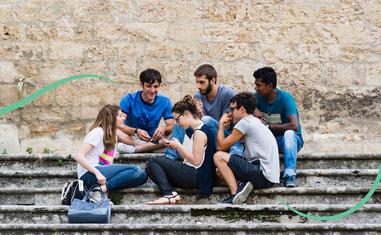







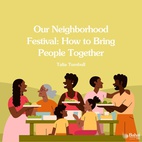
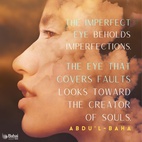


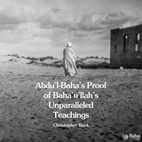
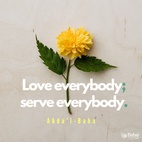

Comments
Sign in or create an account
Continue with Googleor